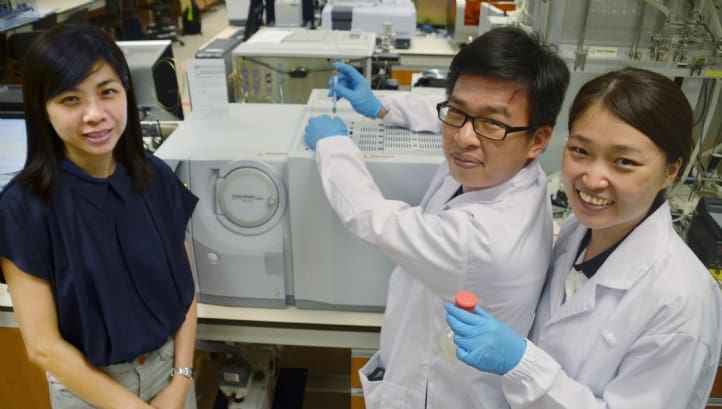A conjoined approach to solving the problems of growing demand for energy and water would definitely be attractive. At the National University of Singapore, we have integrated the solutions to these two problems by designing a plasmonic solar thermal collector nanocomposite, comprising a Ag/SiO2 core, with a TiO2 outer shell as a photocatalyst.
We’re excited about the synergy between photocatalytic and photothermic properties. We believe that this work defines the forefront of plasmonic photo thermic technology, which is vastly untapped, and has broad implications in other fields.
This highly stable core shell structure is designed to take advantage of the Ag nanoparticles as a plasmonic oscillator to increase the local temperature around the nanocomposite photocatalyst; the transparent dielectric SiO2 matrix, encompassing the Ag nanoparticles, enhances light absorption while passivating the Ag nanoparticles against undesirable oxidation.
The TiO2 shell is targeted to absorb the ultraviolet light to split water into hydrogen and oxygen, while the remaining portion of the solar spectrum is absorbed by the Ag/SiO2 core for localised heat generation that concurrently increases photocatalytic hydrogen generation, and for steam generation below the normal boiling point of water due to the nanoparticles acting as nucleating sites for localised steam generation. This allows for an enhanced hydrogen generation by almost twice the rate, as well as a distillation to create fresh water.
First author Gao Minmin, research engineer and PhD student, said: “This work opens up doors for new designs of broadband sunlight harvesting photocatalyst based on photo thermic properties to achieve efficient utilisation of solar energy, for both water and energy solutions.”
The nanocomposite has been tested with seawater, and results show the feasibility of producing hydrogen and fresh water concurrently. This simultaneously allows for energy production in the form of hydrogen fuel, while also producing fresh water for human consumption.
The full paper is published in Environmental Science and Energy journal (Energ. Environ. Sci., 2016, DOI: 10.1039/c6ee00971a)
